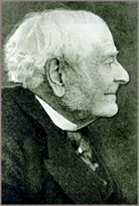Historical account

- Personification of the River Sebeto with the armorial bearings of the City of Naples
The first evidence of an organic collection of documents related to the municipality dates back to the period between the 15th and 16th centuries, when the municipal deeds of Naples were kept in the municipal office of the monastery of San Lorenzo Maggiore.
Since then, the archival corpus has been transferred to several places, from the Banchi Pubblici to the flour storehouse on the dock of the Mandracchio, or to the Monte di Pietà in San Biagio de' Librai and to the monastery of San Pietro a Maiella, in several merchandise storehouses, flats rented for this purpose and even in the offices of municipal employees.
The petitions presented by several cultural movements with regard to a new way of drawing up and keeping an archive, started to take shape after the historical events related to the French Revolution and the transformations such events caused in politics, society, culture and administration, also finding a reason of being in the preservation and fruition of the City Historical Archive.
The revaluation of what was deemed as historical heritage was opposed by continuous political transformations, therefore, despite the administrative authorities' decrees ordered between 1823 and 1825 about the maintenance of the Historical Archive, the situation was not so different from that of recent years. On the contrary, after a period of relative stability the archival material started to be moved around so that several parts of it were transferred to the monastery of Sant' Anna de' Lombardi in Monteoliveto. In 1853, about eighty parchments were moved from there and stored in the Great Archive of the Kingdom of the Two Sicilies. At last, in 1867, most of the documents could be found in Palazzo San Giacomo.
During the Second World War, it was thought better for the archival documents to be stored in the premises below the Torre del Beverello in Castel Nuovo, but, although safe from the war, they couldn't be saved from acts of vandalism: on March 4th 1946 an act of arson seriously mutilated the archival corpus.
After 1980 the City Historical Archive of Naples was enriched with new sections coming from the former Institutions of Public Assistance and Charity.
The most important reformers of the City Historical Archive

Bartolommeo Capasso (1815-1900). "Genius of historiographical and archival studies of southern Italy", he was an authoritative researcher of the historical and cultural tradition of his city.
Member of prestigious Italian and foreign academies, he was one of the founders of the Società Napoletana di Storia Patria, where he held the position of chairman from 1883 until his death.
From 1882 until 1990, he was supervisor of the State Archive in Naples and, after dedicating himself to the activity of classification of documents stored in the City Historical Archive of Naples, on November 26th 1879, the Town Council, led by Mayor Girolamo Giusso, appointed him to the post of "General Supervisor of the Archive and Director of the Library of the City of Naples". He was also president of the Municipal Board for the conservation of monuments. The annotated Catalogue of books, registers and writings stored in the old section or first series of the City Historical Archive of Naples (1387-1806), Naples 1876-1899 was the result of his precious work of reorganization of the city historical archive.

Alessandro Cutolo (1899-1995). Regular Professor of Medieval History at the University of Rome, former scholar of Benedetto Croce, was appointed in 1928 by the Royal Commissioner of the City to be "in charge of the management, reordering and evaluation of the Historical Archive of the City of Naples". During that period, he founded a series of publications, Documents and Monographs of Neapolitan Municipal History, and published two of his numerous studies: The Priviledge of Angevin Kings to the City of Naples, Naples 1929, and The Decurion Era of Naples (1807-1861) , Naples 1932. He was also editor and protagonist, thus winning popularity, of one of the first cultural television programs in Italy: "Answers for you", broadcast from 1954 until 1968.
Area Cultura e Turismo Servizio Beni Culturali - Archivio Storico Municipale
Salita Pontenuovo, 31 - 80139 Napoli
e-mail: archivi.storici.biblioteche@comune.napoli.it
pec: archivi.biblioteche@pec.comune.napoli.it